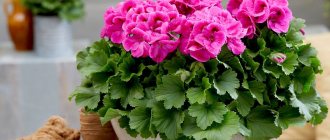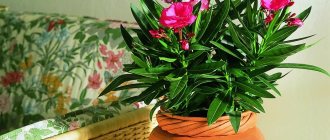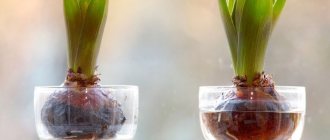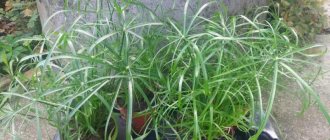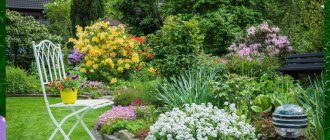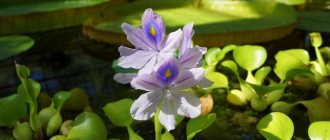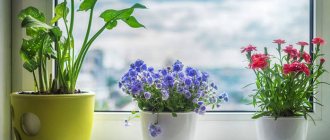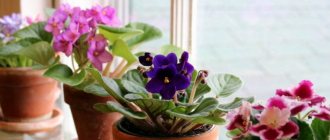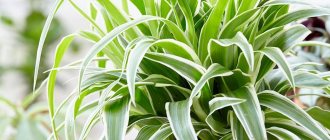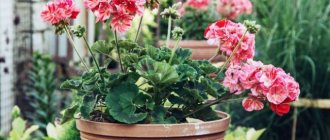The green wall in the interior is a relatively new interior object. It is used to smooth out the situation and dominate a large number of horizontal surfaces. You can organize such vertical decor in any room. The main thing is that the conditions for growth are suitable and that watering is regular.
Decorating a wall with a green garden in a living room in a private house Source dekormyhome.ru
What is a green wall
Landscaping is a partition or simply a vertical object. It is made from living plants of climbing and bush varieties. The composition is formed using holding structures. The frame of these is built strong and stable, since the finished decor will have considerable weight.
Hall with a corner living wall made of hanging plant stems Source ecosoil.ru
Vertical gardening in a house or apartment has several functions:
- suppresses noise (plant leaves are able to retain sound waves, preventing them from passing into other rooms;
- equips the room with oxygen (plants clean the air of carbon dioxide and release oxygen in return);
- it looks beautiful and accepts dust (its small particles are attached to the leaves, leaving the furniture almost clean);
- saves space in the room (plants are planted in one location, so your window sills and floors will remain free);
- in hot weather, it cools the room and increases its humidity (this occurs due to evaporation);
- has a zoning effect (with the help of a vertical garden you can divide one spacious room into two. Relevant for a studio apartment or kitchen-living room);
- allows you to hide defects in walls and ceilings, visually aligns the room.
In order for the wall to always be beautiful and lush, it must be properly maintained. Therefore, when selecting plants, be sure to consider what conditions they need. It is advisable to select varieties that are less capricious or require the same care.
The art of interior design with plants
Plants can add character to an interior, separate rooms from each other, hide imperfections or visually enlarge a space. A competent and thoughtful selection of colors can change your home beyond recognition. Flowers are not only aesthetically pleasing, but also have health benefits. Florists advise surrounding ourselves with vegetation every day, as it improves our well-being, absorbs harmful substances, improves air humidity and, most importantly, makes us relax.
Modern and minimalist interiors require careful selection of plant species so that they do not compete too much with the ascetically simple form. All types of decorative flowers are perfect for such interiors. The species may be decorative, for example with a slightly yellow stem or beautiful white inflorescences.
Selection of plants for vertical decoration and method of cultivation
When choosing vegetation for your home garden, you first need to decide on the planting method. Indeed, for many indoor crops this factor plays an important role. Can be planted using regular flower soil (sold in gardening stores) and hydroponics.
Floral decorative wall made from different varieties of indoor plants Source dekormyhome.ru
The first option is the most popular; it is the usual habitat for indoor plants. Through the soil, the flowers will receive a sufficient amount of nutrients. But this planting option has one drawback - if the volume of planted plants is large, then such soil will need to be changed frequently (3-4 times a year). This is due to the fact that over time the vegetation will absorb all the useful elements and gradually begin to die.
The second option is hydroponics. It involves placing the root system of plants in a special substrate. The most optimal is expanded clay in combination with sphagnum moss. The first ensures normal access of oxygen, the second retains moisture.
Green wall in the house as a partition for zoning Source pinterest.ru
Living wall plants are divided into three groups.
Ideally suited plants
They have a high survival rate. In 90% of cases they germinate even after several transplants.
- Scindapsus (optimal temperature for growth is 15-18 degrees, but not less than 12. Requires humidity and bright lighting without direct sunlight.
- Agloonema. It has large oblong leaves, is thermophilic, the air temperature should be at least 18 degrees. The plant grows well in partial shade and requires frequent spraying, as it prefers up to 80% humidity. During active growth, you need to feed the agloonema with mineral fertilizer in the form of a solution.
- Monstera. It is easy to grow as it does not require special care. Grows at temperatures not lower than 12 degrees. Bright diffused light or even partial shade is suitable for lighting. They need regular fertilization with minerals. Its main property is the enrichment of the room with oxygen.
- Maranta. This plant is notable for the color of its leaves. The plant is considered heat-loving, so the optimal temperature is 22-24 degrees. It grows in partial shade, but direct exposure to sunlight should be avoided.
Plants that suit well
This vegetation is well suited for landscaping vertical surfaces, but is more demanding to care for.
- Spathiphyllum. It grows at 22-23 degrees, and in winter at 15 degrees. Requires diffused bright lighting. Considered to be tolerant of dry air, but requires frequent misting.
- Dracaena. Grows at air temperatures not lower than 12 degrees. Feels good in bright, diffused light. Dracaena needs to be fed once every two weeks with liquid mineral fertilizers. A well-groomed plant has beneficial properties and has a beneficial effect on the body. Helps older people cope more easily with summer heat and pressure changes.
Fragments of a green wall in the living room Source dizainvfoto.ru
Plants that are less commonly used for vertical gardening
- Anthurium. Has bright red inflorescences. These flowers stay on the plant stems for only a couple of weeks. Therefore, you can choose varieties so that flowering is continuous at least during a certain season. Growing at moderate temperatures - not lower than 15 degrees. In winter it loves bright light. It is necessary to spray the leaves twice as often, otherwise they will lose their color.
- Guzmania. A thermophilic plant, it develops well at a temperature of 20-25 degrees. Very demanding on air humidity. Therefore, daily spraying cannot be avoided. This plant must be grown in partial shade and high humidity. Regular spraying will be required.
All these plants can be combined with each other to create a living wall. The main thing is not to forget the rules for caring for each of them. It is advisable to start all care from the bottom up (loosening the soil, fertilizing, watering; wiping the leaves from dust, spraying them with settled water at room temperature).
On a note! To design a vertical garden in your home, it is recommended to contact a phyto-designer. It will help you decide on the size of the decor for each specific room.
Decorative living wall of different plants above the stairs in a two-story private house Source dekormyhome.ru
Unfinished green wall on the wall, decoration using hanging structure Source market.sakh.com
How to make a structure for a phytowall, phytomodule in an apartment or house: diagram
Design for a phytowall: diagram
I would like to say right away that making a phytomodule at home is a rather labor-intensive process. But still, if you spend money on quality materials and show a little patience, you will eventually be able to enjoy a man-made garden in your own home for a very long time. Now let's figure out what you will need to carry out the work.
So:
- Make sure you have material on hand from which you can later make a durable frame. Wooden boards or slats, plastic pipes or aluminum corners are ideal for these purposes. In principle, all of the above materials are durable and ideal for creating a frame. But still, for example, it is best not to use an aluminum profile for the manufacture of large-sized phytomodules, as it may bend slightly under heavy load.
- Separately, I would like to say about the moisture-resistant canvas, which will clean the walls of the home from moisture. Of course, if you want to save money, you can easily use ordinary polyethylene. But as practice shows, due to the fact that it interferes with normal air circulation, after some time mold still appears on the walls. In view of this, it will be better if you spend a little more and buy polycarbonate or PVC sheeting.
- In order to make the right cell for planting plants, you will need a material that is difficult to rot and special soil. Therefore, be sure to also buy high-quality felt, as well as hydroponics with a small addition of expanded clay.
Felt fabric folding pattern
Ready-made pockets for planting plants
Recommendations for making phytowalls:
- First of all, decide what size phytomodule you want to make. If you don’t want to end up redoing it, then you can draw the shape of the vertical garden on the wall, and then measure the exact dimensions. Having received the data, start making a frame from wood, plastic or aluminum. Keep in mind that it doesn't have to be a simple square or rectangle. It must be reinforced with vertical and horizontal transverse ones. Treat the finished frame with water-repellent agents and begin making pockets for planting plants.
- Take felt fabric and form it into the desired number of pockets. To begin, measure out a piece of size that will exactly match the dimensions of the frame. Next, take a piece 3 times larger and attach it to the previously cut one, and fold it so that you get folds of the same size. Secure everything with pins and stitch them so that you get pockets of the same size.
- Cover the frame with waterproof material (film or PVC cloth) and attach felt pockets to this structure. If the frame is wooden, you can use small nails. If you used an aluminum profile to make it, then you will need small screws.
- At the final stage, secure the phytomodule to the wall using larger screws and you can begin connecting the irrigation system. If the phytowall is placed in a room into which there is practically no daylight, then you will definitely need to place artificial light sources near it, which can easily be turned in the right direction. After all this is done, the pockets can be filled with special soil and plants can be planted.
Nuances of creating a green wall and tips
Use our tips to organize a green wall in your space. Consider its functionality and some important nuances:
- To organize a green vertical garden, use a wall that does not bear a functional load.
- Choose a frame that can support the weight of the flowers. Moreover, the structure must be positioned so that it holds securely.
- To prevent water from leaking onto the wall after watering, you need to attach a plastic panel to the end of the retaining structure. It will prevent swelling from water.
- To avoid watering the vegetation too often, you can attach pieces of rags to each plant. They are regularly soaked with water, from where the plant receives moisture.
- An irrigation system is also suitable for watering. It is a plastic tube through which water slowly rises and drips through holes into the ground.
- For a house or apartment, you can choose a ready-made vertical living wall. It will cost more than selecting each plant individually, but it will come with care instructions.
Please note that similar growing conditions for all plants make caring for them easier.
Vertical garden with a beautiful symmetrical pattern Source pinterest.ru
Phytowall of indoor plants in an apartment: photo
Idea #1
Idea No. 2
Idea No. 3
Idea No. 4
Idea No. 5
Idea #6
Idea No. 7
So that you can get a more complete idea of what a phytowall can be like in the interior of an apartment, house or cottage, we bring to your attention several original ideas for creating such decor.
Advantages and disadvantages
In addition to the fact that a vertical green wall takes up little space and has a unique landscaping effect, several more advantages can be identified:
- Air quality improves. This works provided that the plants are carefully monitored and care requirements are followed. The room is enriched with oxygen, especially if tropical plants grow in the house.
- Unique design. A living wall in a living space looks impressive and catches the eye. Therefore, the room is transformed significantly. This effect quickly enlivens any space.
- A plant wall helps save thermal energy. After all, a large wall tends to accumulate optimal temperature around itself.
The disadvantages of landscaping include:
- the need to constantly refresh and feed plants;
- you need to choose plant varieties of approximately the same size;
- it is necessary to constantly care for the leaves (remove dust).
In general, caring for green garden vegetation at home is not difficult.
Fluffy living wall in the house from different indoor plants Source roomester.ru
Design ideas
Plantogram
A living picture has the shape of a plant canvas with small flowers. It occupies part of the living room wall. Succulent plants are used to create a plantogram. The main theme of the paintings is still lifes.
Big beats
Plants with large leaves are used to create a living wall. It is better to place such structures in niches. It creates a feeling of penetration of vegetation from the street and closeness to nature. Designs of this type always occupy a central place in the interiors of premises.
Japanese grace
A Japanese-style living wall is made in the recess of a window. The composition consists of several branches of vegetation of the same decorative type. They are used in interiors designed in a minimalist style. They create the feeling of greenery looking through the window and emphasize the laconic design of the room.
Green pockets
Ceramic pots, plastic or wooden containers are used in the design for planting plants. Each of them houses one or more plants. Modules with them are placed on the frame in a certain order, creating a composition.
Merging fragments
Modules with plants are placed on the wall in scattered fragments. In such a composition it is easy to update the panels and change the appearance of the wall.
Moss panels
Used for installation in bathrooms.
Live waves
The idea is suitable for decorating surfaces whose integrity is destroyed by door and window openings. Several types of plants have lines that create intricate patterns.
Inclined installations
Containers or pots with plants are installed in double-sided niches located at a slight angle. To create a living wall, only one variety of plants is used.
Green columns
They consist of climbing plants that are planted in pots and allowed to trail along a cone-shaped frame. The most common places to install green columns are: bathroom, kitchen, hall. This type of installation is best suited to Mediterranean-style interiors.
Tips for creating a green wall in your home
To make your landscaping look even more interesting, use a few design tips:
- Create patterns and ornaments on such a wall. This can be achieved by using plants with leaves of different shades of green.
- Fill the void under the stairs in two-story homes. The hall will look impressive and fresh this way.
- Outdoor plants can also be used for vertical gardening. Ivy will feel great in the home. But care is important for him.
- The green wall can be recessed into a specially prepared niche made of MDF or lining. This approach will give the atmosphere neatness.
Everyone can use different vertical decor designs for decoration. For example, make landscaping with breaks along the wall or plant plants around columns in a hallway with high ceilings.
Peculiarities
When arranging their home interior, many people choose attractive climbing plantings. They are placed in light hanging vases or baskets, often using special supporting parts that are necessary for hanging shoots.
One of the main features of climbing plants is their decorative effect. With their help you can decorate any interior. Thanks to the beautiful climbing plantings, the environment becomes more lively and colorful. The plants in question are wonderful specimens for beautiful vertical gardening.
Climbing plants are distinguished not only by their spectacular appearance, but also by their unpretentiousness. Most varieties do not require complex care, so even novice gardeners can easily cope with their cultivation. Of course, there are exceptions to this rule. For example, the same begonia cannot be called a non-capricious plant.
The green pets in question can grow both in partial shade and surrounded by bright light.
However, in all cases it is necessary to take into account the characteristics of a certain species, the cultivation of which you are interested in.
Most of the charming house vines are perennial and evergreen. Many of them can boast of intensive growth, to the delight of gardeners. Certain varieties can reach a significant height of 2 m during the season. As a rule, they all have flexible and herbaceous stems, but there are also types of indoor vines that become woody over time.
Another important feature of indoor vines is the method of attachment to base surfaces. Climbing or tendril-bearing plants entwine the supporting part with their shoots, and root-climbing plants with their roots. Of course, climbing varieties are most often found in homes because they look pretty and expressive.
As mentioned above, climbing plants do not require special care, however, many users find it difficult to water them. This problem is due to the fact that the plants in question are usually located at a significant height , and water very often flows directly onto the floor. To prevent floor coverings from becoming deformed by accumulated puddles, flower growers place rubber caps and bags on the bottom. These products can be easily removed an hour after the climbing plant is watered.
When planning to acquire such ornamental plants, you should take into account one more important feature of them - most of them are moisture-loving . We must not forget about watering the bindweeds. It is important to spray their leaves in a timely manner, especially when the weather is hot and dry.
Fashionable design ideas
It is not enough to simply plant plants in pots and care for them according to the recommendations. You can try out several interesting ideas that will look good in modern interior solutions.
Landscaping in an open niche of a wardrobe
A beautiful green wall for a small living room will fit comfortably in the bedside table of a wardrobe or other furniture set. If there is an internal shelf from the TV left, then you can also fill it with plants.
A small beautiful living wall against a white background for a living room set Source ecosten.rf
Multi-layer garden wall
It turns out to be a very impressive spectacle. This design consists of several varieties of plants that differ in shade. This composition looks good both in good light and in partial shade.
Green walls in a house with a non-standard texture Source sadkoltso.ru
Sloping landscaping at the doorway
This decor is placed in two identical double-sided niches. Plants are arranged in small pots in rows. It is advisable to plant plants of the same variety in such niches. Design in layers is allowed.
Living green garden in double-sided niches near the doorway Source s30086307251.mirtesen.ru
Implementation of a zone near the TV
In a spacious, bright room, you can use a living garden to decorate the wall on which the TV hangs. To do this, you will need two niches with a regulatory mechanism. Plants are displayed on their shelves in long trays. The base for the wall itself is located on both sides of the TV.
Decorating a wall with a living vertical garden on both sides Source s30086307251.mirtesen.ru
What plants and moss are suitable for phytowalls in an apartment or house: list
List of plants suitable for phytowalls
In principle, as practice has shown, almost all indoor plants can be used to create a phytowall, albeit taking into account some nuances. If you want your man-made garden to please you and your guests for a very long time, then plant the most unpretentious plants in it that can grow with a minimum amount of light and moisture. Also keep in mind that it is best to use either flowering plants or just green ones on one phytomodule.
Since flowering plants require more care, they may simply not have enough moisture, nutrients or light and simply refuse to grow. If you decide to decorate the green mass with flowers, for example, orchids, then make sure that they have a separate watering and lighting system that would help create conditions ideal for their growth.
List of plants suitable for phytowalls:
- Plants of the arrowroot family. As a rule, these are not very tall bushy plants that love moderate humidity and grow quietly in slightly darkened rooms.
- Plants of the Hypoxydiaceae family. These indoor plants are somewhat similar to the previous type. The only difference is their longer leaves and slightly higher height. Therefore, it is not advisable to plant them in the center of the phytowall.
- Fern family. This group includes Pellea, Nephrolepis and Pteris. As a rule, these plants produce very lush and bright green tops, which at the same time look very light, mobile and airy. The main advantage of ferns is their ability to grow near heating sources.
- Bromlev family. Although these plants are flowering plants, they can still be combined with green plants. Due to the fact that they can be watered in a non-standard way, you can care for them just like everyone else. If you see that the time has not yet come to moisturize the entire phytomodule, but this type of plant has begun to fade, you can simply spray their flowers with a spray bottle. This will be enough to make them look perfect again.
- All varieties of ivy. Ivy is more suitable than other plants for creating phytomodules. It is unpretentious in care and easily tolerates a lack of moisture, light and air. Therefore, if you wish, you can use it for zoning or decorating the kitchen, bathroom, toilet or interior corridors. A wide variety of colors and leaf shapes of this plant will help you make your man-made garden as original and beautiful as possible.
Ornament of different varieties
Walls made from several plant options that differ in color look very impressive. When they are ripe, a peculiar structural pattern is obtained. Typically, small areas of landscaping are used for such purposes.
Interesting pattern on a green wall made of plants Source flowall.ru
How can you decorate your interior with plants?
Floral wall decor
Floral wall decor is the perfect way to dress up your interior. Your wall can look like a place for art, and this trend is becoming increasingly popular.
Decorative vase with flowers
The easiest way to decorate your interior with flowers is to fill a vase with a beautiful bouquet. The vase you choose should complement the look of your flowers, so make sure you find something that goes well together. Use a large decorative vase to create an accent, while smaller vases are great for kitchens, bathrooms and bedrooms.
Below, we've rounded up our favorite houseplants that will transform your interior into a stylish sanctuary and add character and texture to your existing space.
What is needed to arrange a phytowall?
Structures with living plants need light , and the lighting must be correct, otherwise the plants may get sick and even die. The body of the structure, of course, can have a built-in lighting system, but most often such lighting is not enough. Therefore, it is better to use ceiling lighting, which should be calculated by a specialist.
Vertical gardens require an electrical . And for large phytowalls, a connection to water supply and sewerage .
Automatic watering is required for phytowalls and phytomodules with a hydroponic planting method, and systems on the ground can be used without it.
Plants in phytowalls can be planted in two ways: “ on the ground ” and the hydroponic method , while only the hydroponic method is typical for phytomodules. You can read more about them on the websites of companies involved in vertical gardening.
Naturally, any design has its own dimensions . So, for example, a phytopartition can have a width of about 40 cm (depending on the height), a phytopicture about 15 cm, and a phytowall about 20 cm. In each case, these dimensions are individual, and they must be taken into account.

